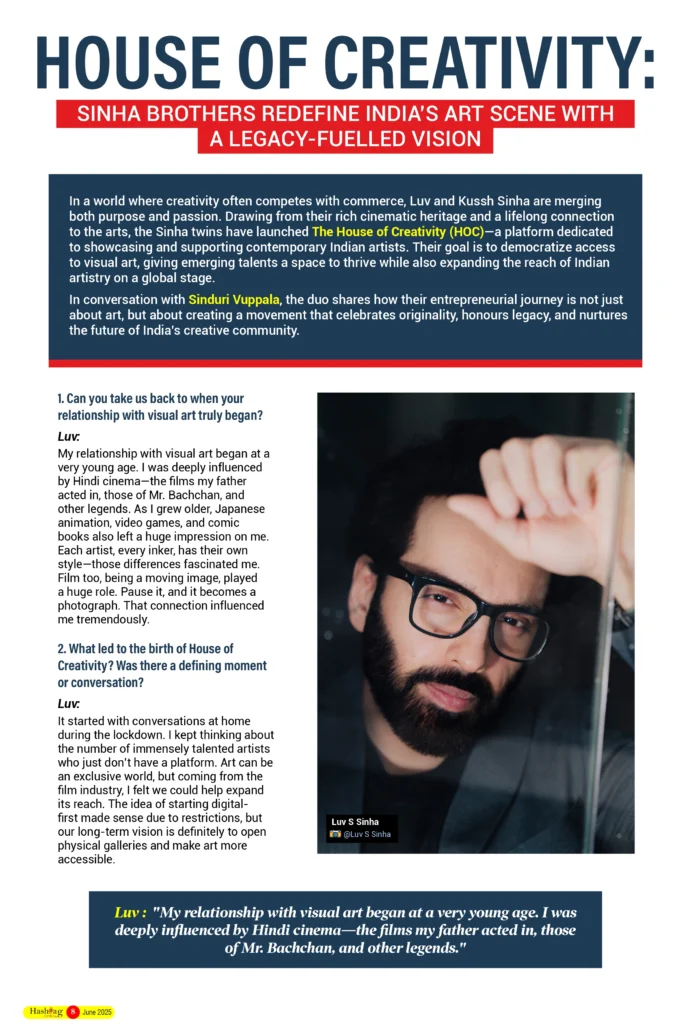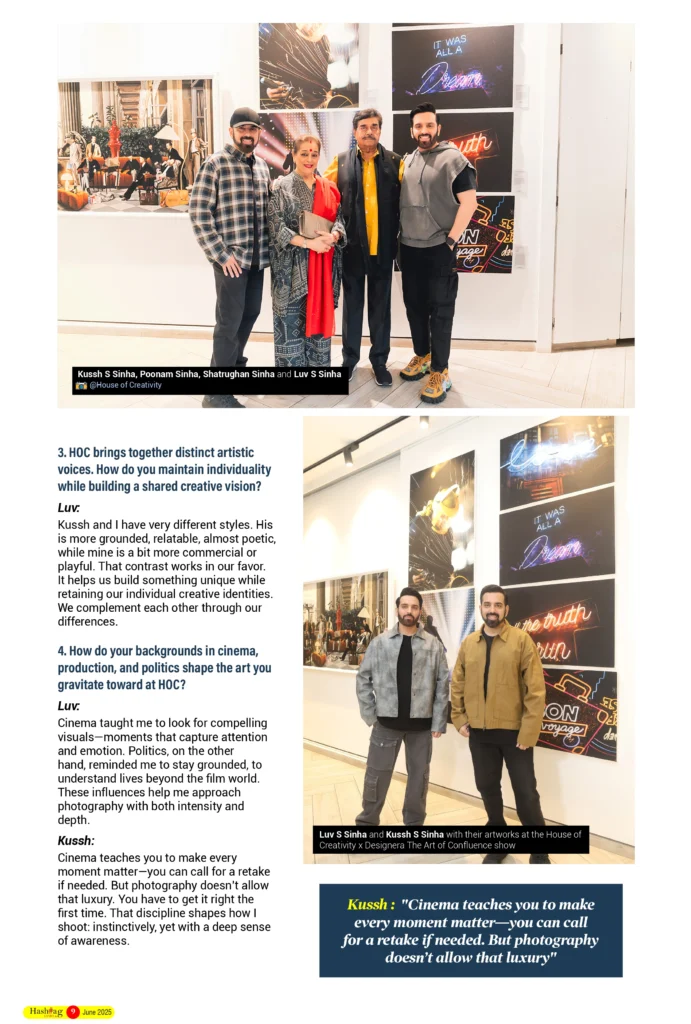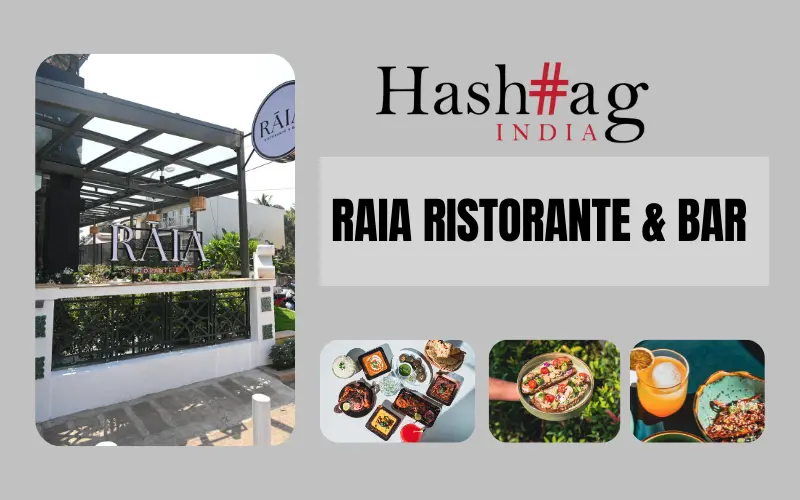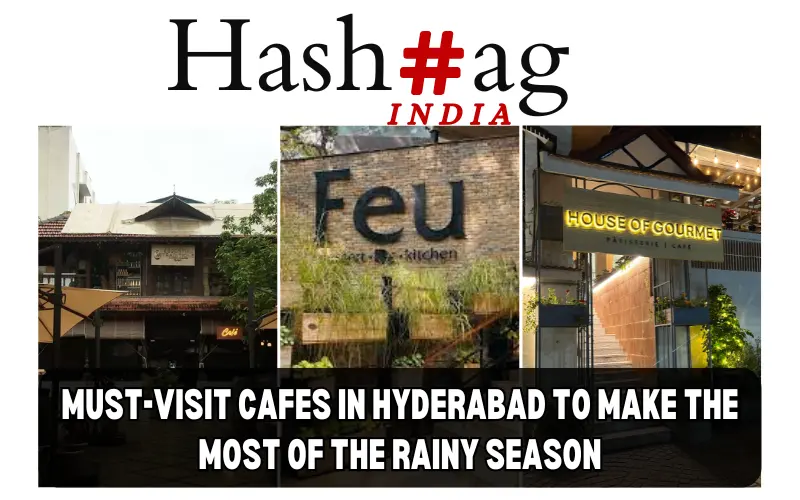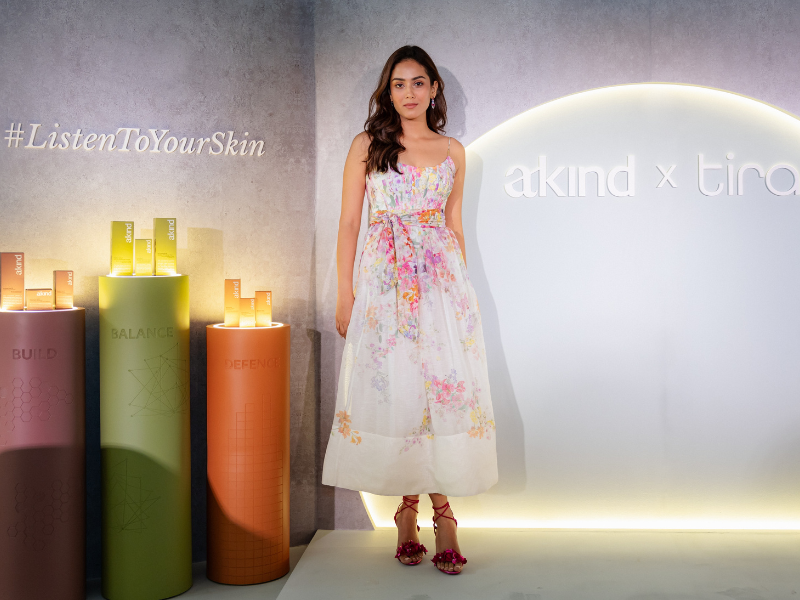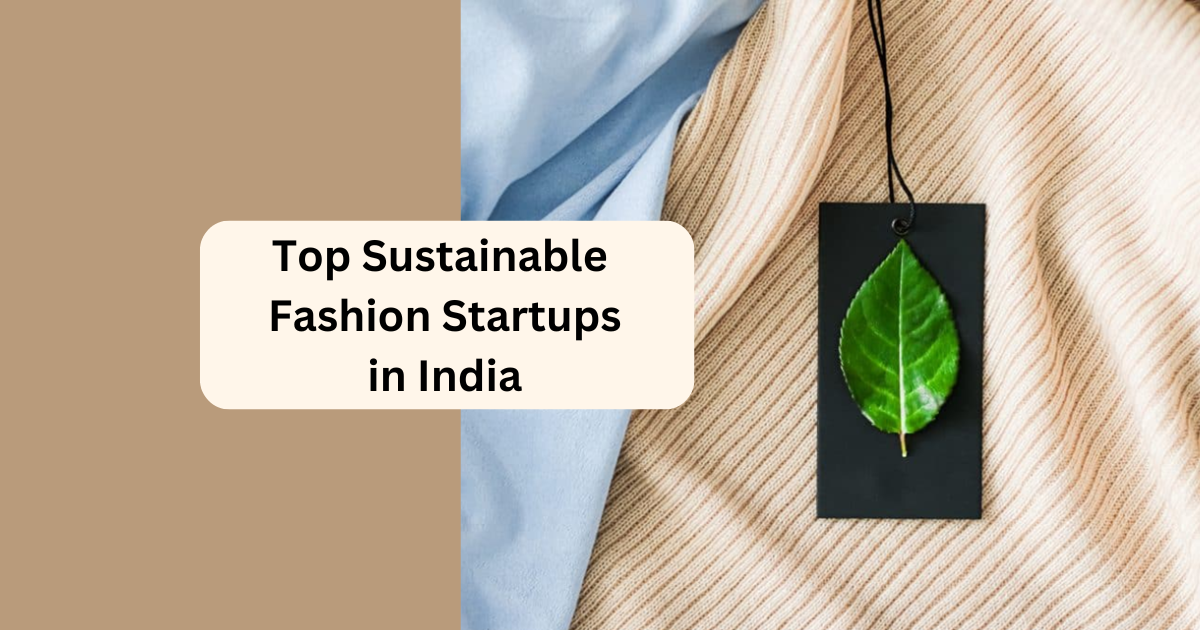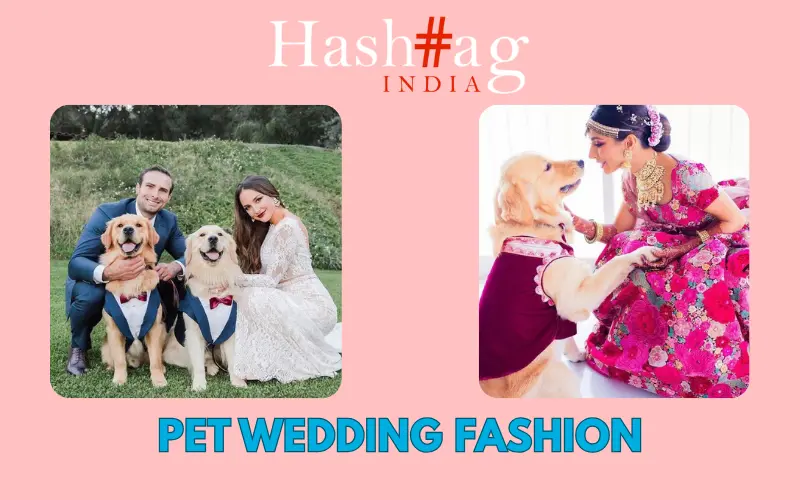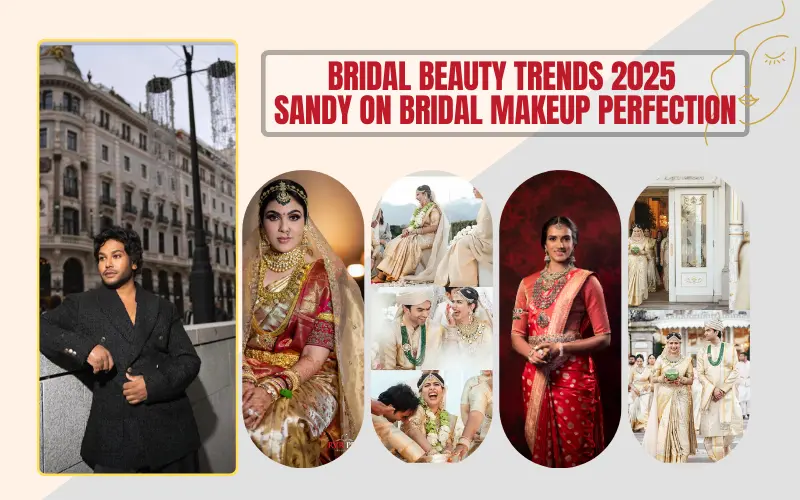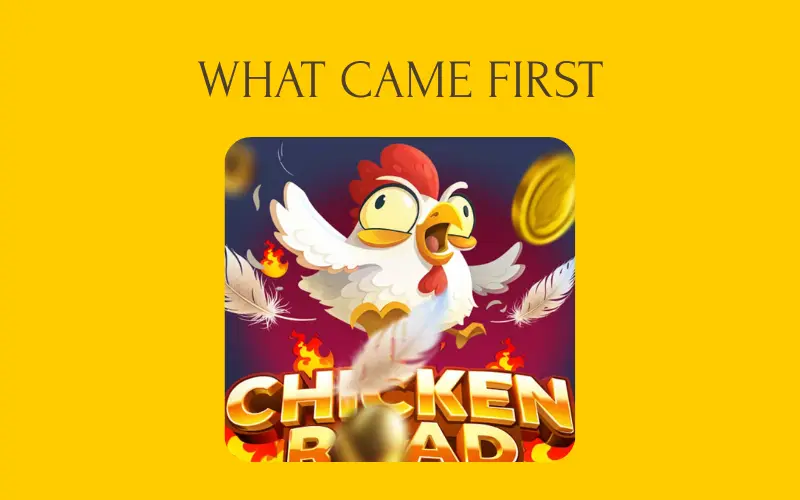In a world where creativity often competes with commerce, LUV and KUSSH SINHA are merging both purpose and passion. Drawing from their rich cinematic heritage and a lifelong connection to the arts, the Sinha twins have launched The House of Creativity (HOC) a platform dedicated to showcasing and supporting contemporary Indian artists. Their goal is to democratize access to visual art, giving emerging talents a space to thrive while also expanding the reach of Indian artistry on a global stage.
In conversation with SINDURI VUPPALA, the duo shares how their entrepreneurial journey is not just about art, but about creating a movement that celebrates originality, honours legacy, and nurtures the future of India’s creative community.
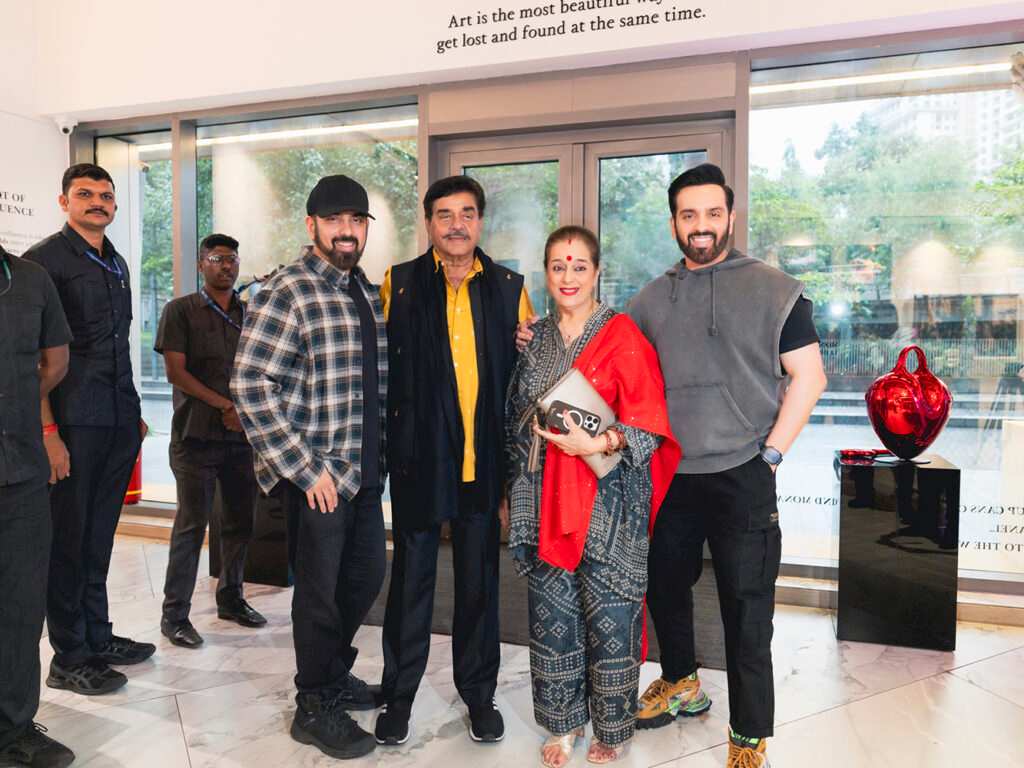
1. Can you take us back to when your relationship with visual art truly began?
Luv: My relationship with visual art began at a very young age. I was deeply influenced by Hindi cinema the films my father acted in, those of Mr. Bachchan, and other legends. As I grew older, Japanese animation, video games, and comic books also left a huge impression on me. Each artist, every inker, has their own style those differences fascinated me. Film too, being a moving image, played a huge role. Pause it, and it becomes a photograph. That connection influenced me tremendously.
2. What led to the birth of the House of Creativity? Was there a defining moment or conversation?
Luv: It started with conversations at home during the lockdown. I kept thinking about the number of immensely talented artists who just don’t have a platform. Art can be an exclusive world, but coming from the film industry, I felt we could help expand its reach. The idea of starting digital-first made sense due to restrictions, but our long-term vision is definitely to open physical galleries and make art more accessible.
3. HOC brings together distinct artistic voices. How do you maintain individuality while building a shared creative vision?
Luv: Kussh and I have very different styles. His is more grounded, relatable, almost poetic, while mine is a bit more commercial or playful. That contrast works in our favor. It helps us build something unique while retaining our individual creative identities. We complement each other through our differences.
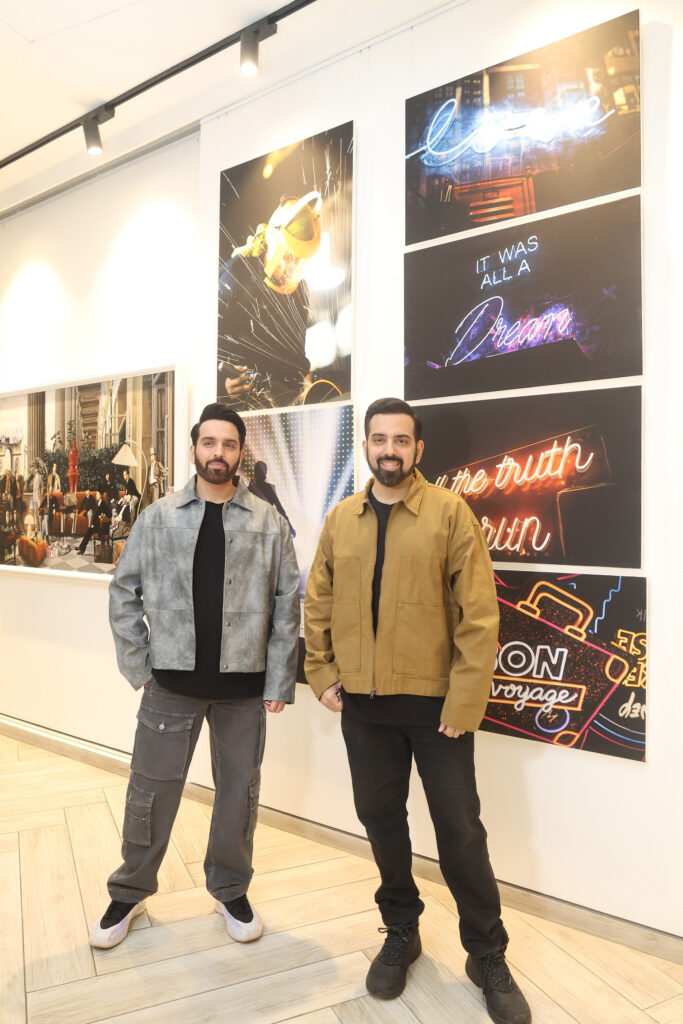
4. How do your backgrounds in cinema, production, and politics shape the art you gravitate toward at HOC?
Luv: Cinema taught me to look for compelling visuals moments that capture attention and emotion. Politics, on the other hand, reminded me to stay grounded, to understand lives beyond the film world. These influences help me approach photography with both intensity and depth.
Kussh: Cinema teaches you to make every moment matter; you can call for a retake if needed. But photography doesn’t allow that luxury. You have to get it right the first time. That discipline shapes how I shoot: instinctively, yet with a deep sense of awareness.
5. The Art of Confluence marks a major physical showcase for a digital-first platform. How did that transition shape your curatorial approach?
Luv: It’s been a rewarding step. We collaborate closely with gallery partners on every decision, blending our perspective with theirs. The physical show is a milestone for us and for the artists, giving their work a tangible, immersive presence beyond screens. Working with the Design Era team was smooth and insightful.
6. The show presents both traditional and digital art. What excites you about this intersection?
Luv: It’s a reflection of how art has evolved. Traditional art is the foundation that teaches us craftsmanship. But digital tools are the future, enabling more people to create. That blend of brushes and screens is what excites me most. It shows how inclusive art can be today.
7. How has the response been to the exhibition so far?
Luv: The response was phenomenal. The preview night had a great turnout, and we saw genuine interest not just from art lovers, but from collectors. Still, I always want to push the bar higher. Every show teaches us something new. But this one, with Amrita and the Designerra team, was a real highlight.
8. Luv, your photos feel cinematic are they spontaneous captures or carefully composed stories?
Luv: A bit of both. I do shoot spontaneously, but I’m always prepared. My camera is with me wherever I go because I never want to miss a moment. So while the moments are real, the intent behind capturing them is definitely planned. You have to be ready for the story before it unfolds.
9. Kussh, your photography was largely private until now. What made you decide to share it publicly?
Kussh: Photography has always been personal, something I do to observe and explore the world. But I’ve come to see the value of feedback. Honest critique helps you grow. So I decided to include my work in The Art of Confluence to open up that conversation and evolve as an artist.
10. What is it like working creatively with your sibling? Do disagreements ever lead to breakthroughs?
Luv: Working with Kussh is straightforward. He knows what he wants. I give him options, he picks what resonates. We respect each other as artists first. If I tried to dictate his vision or if he did the same it would take the soul out of the art. Creative freedom is non-negotiable for both of us.
Kussh: We work well because our styles are different. I’m drawn to street photography capturing fleeting, human moments. Luv brings a more cinematic lens. That contrast creates a diverse visual language. We don’t need to agree all the time. That’s part of what makes it interesting.
11. Are there plans to take HOC global, or into more offline/physical spaces? What kind of impact do you hope to make on emerging Indian artists and collectors?
Luv: Absolutely. We already have an international partner in Dubai Paintbrush Art Company and we’re looking to expand further. I want to open a gallery space in India too. But beyond infrastructure, our impact should be emotional and cultural. We’re not just offering exposure, we’re building a family of artists. The name House of Creativity reflects that. Our artists support us as much as we support them. It’s a shared journey and we’re just getting started.


